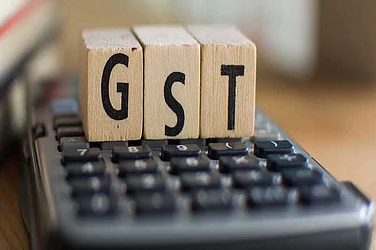My first meeting with Sona Koyo Steering Systems' Surinder Kapur was in 1990, just a couple of years after he started his company and was still settling down as a manufacturer in the then fledgling auto components industry. What stood out in the interview was that Kapur, then a young man in his 40s, was thinking far ahead of his time and talking of concepts and systems India had not even heard.
Yet, he seemed to have clear thoughts — and was determined to go ahead with his plans that were different from what Indian industry had seen thus far. Kapur had a clear vision of where he wanted to see his company 10 years later and had the determination and body language to take it there.
Kapur's quest to do something different began from the early days when he branched away from the family jewelry business (the name Sona comes from the family business), and went abroad to Michigan to study engineering and eventually start a company.
His Sona Steering systems was one of the first joint ventures of the then Maruti Udyog Ltd and laid the foundation of component manufacture in India along with a couple of other component firms who supplied parts for Maruti's iconic Maruti 800. It was also one of the first companies to attempt using new technology to manufacture steering systems and has grown to become India's biggest steering manufacturer, supplying to Honda, Hyundai, Toyota Kirloskar, General Motors, Mahindra & Mahindra, and Tata Motors, among others, apart from its first love Maruti Suzuki India.
Right from the beginning, Kapur was one for bringing in not just new technology but also new systems and processes into his manufacturing unit. This helped his company grow manifold within a few years. With a pronounced focus on manufacturing, Kapur brought in the popular systems like Kaizen and Toyota Production Systems' efficiencies into his company. From a humble beginning as a Rs 7 crore company in 1987, the BSE listed Sona Koyo Steerings saw revenues of over Rs 1,500 crore last year.
In 2008, Kapur acquired BLW (the forging arm of German major ThyssenKrupp). Three months after the acquisition, BLW, a company almost 10 times the size of Sona, was on the verge of insolvency. Kapur took charge of the situation and after strenuous efforts, he managed to turn around that operation. This he did not only by tightening the systems but also by negotiating with the unions and convincing them to cooperate by taking a salary cut among other things.
A great proponent of skill development, Kapur created systems for his employees. One of these was a programme under a professor from Harvard's MIT Sloan School of management where he sent many of his executives to learn new techniques and improvise on the manufacturing process. This quest of his took him to many committees of the industry in Confederation of Indian Industry (CII) and the government, including the Automotive Mission Plan 2006-2016 set up by the ministry of heavy industries.
In an interview with Outlook in 2014, Kapur told me that India had the skills to do something new and different but was falling short because we didn't generate new ideas. "We need to concentrate on design and development of original products. Today you give us a print and we will make the product but we do not have the ecosystem to create original products. It is not part of the DNA of Indian manufacturing," he had said.
After having taken over a German company and seeing working methods and systems in India, he had felt that while India employed many similar methods and manufacturing processes, in general, the same kind of work discipline did not exist in India. And that was why Indian manufacturing was lagging behind its international peers. India was also falling behind because of our inadequate and faulty supply chain logistics. "For India to succeed in its 'Make in India' push, infrastructure has to be world-class. It cannot be just setting up of SEZs. The government needs to look at the entire value chain — power, land, clearances, data," he had told Outlook in 2014.
Kapur felt that the government's role in the industry should be minimal. It should act just as a facilitator and creator of infrastructure and set laws for the functioning of companies and let them work on their own.
A great motivator, Kapur felt that the company's leadership role was to motivate employees and communicate the required values effectively. That voice will be dearly missed by the India — and Indian industry.

















